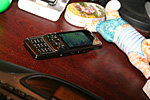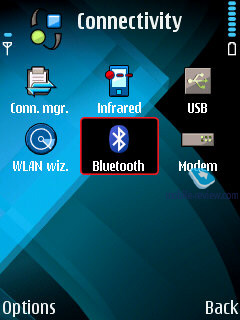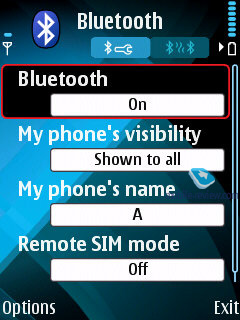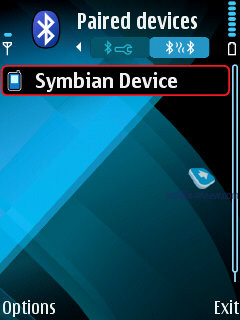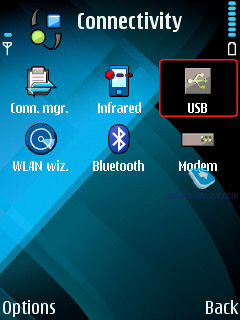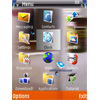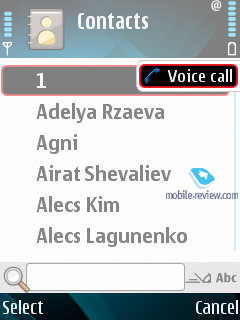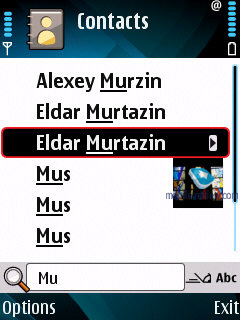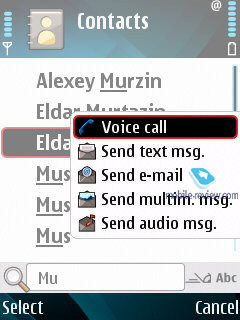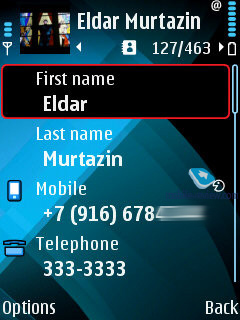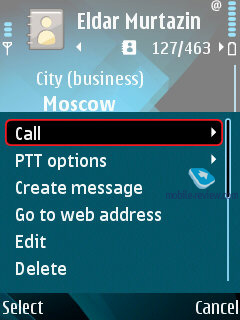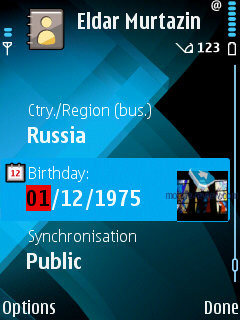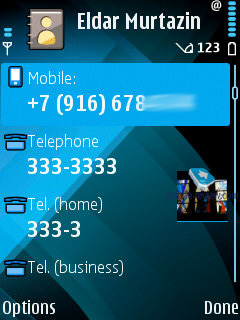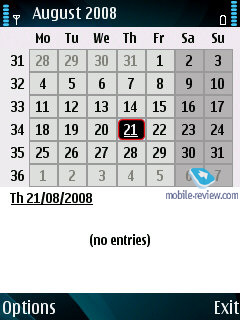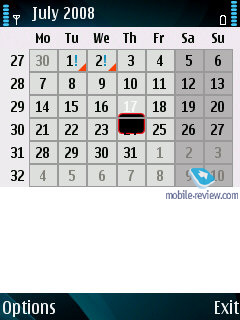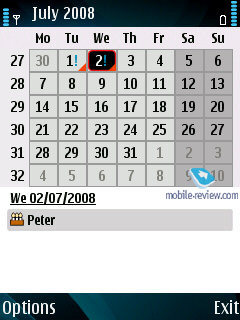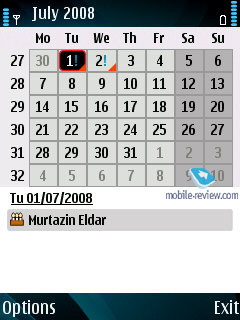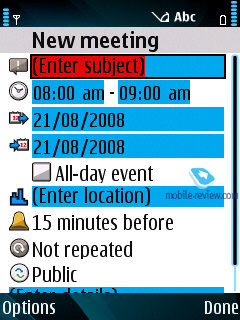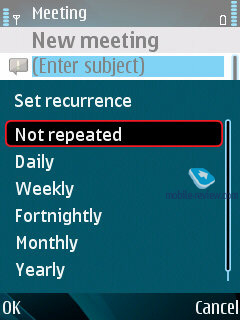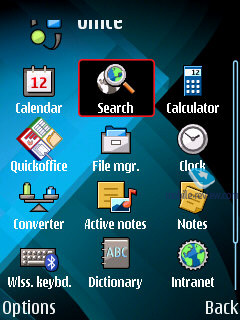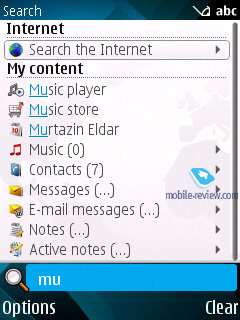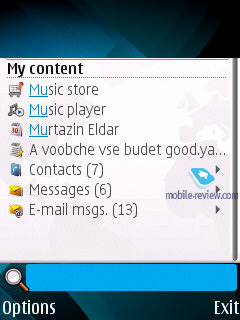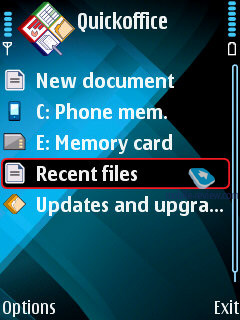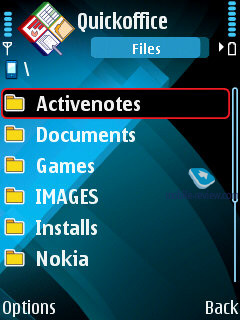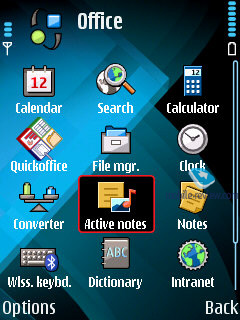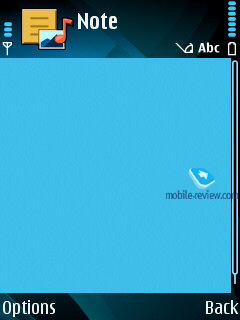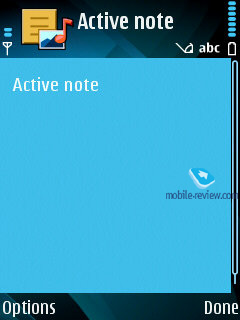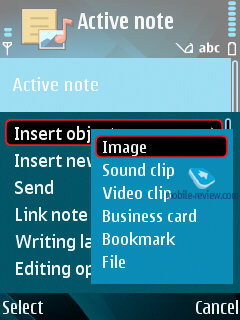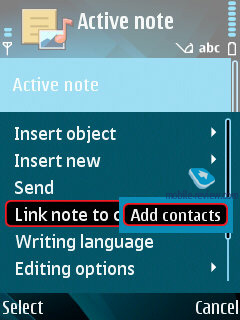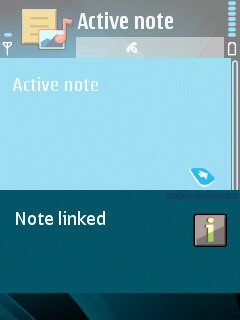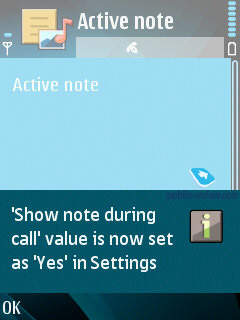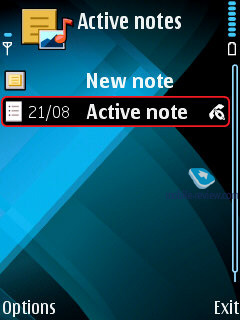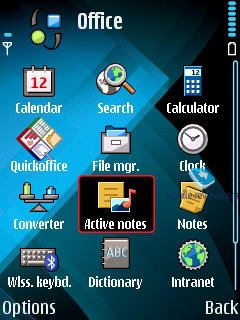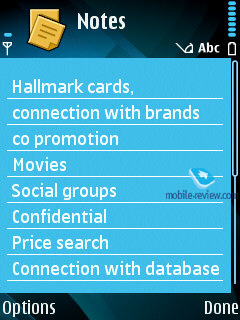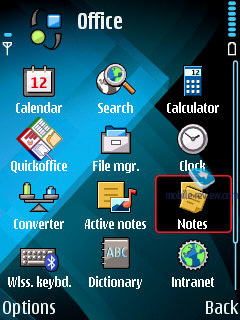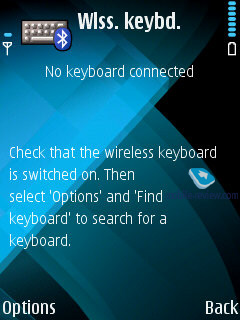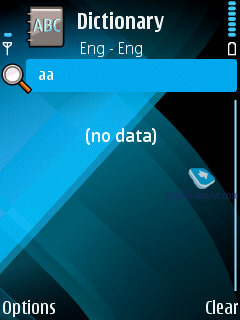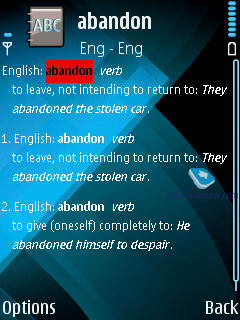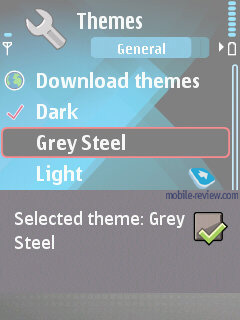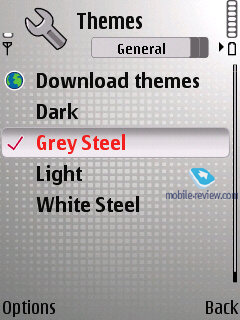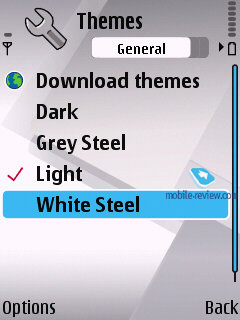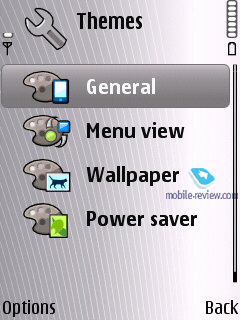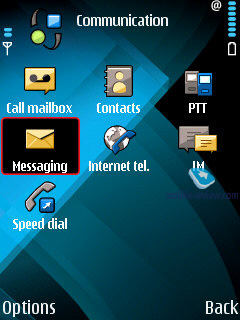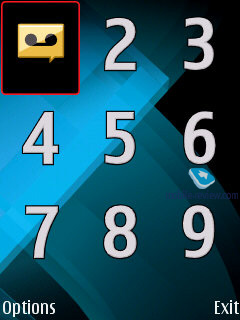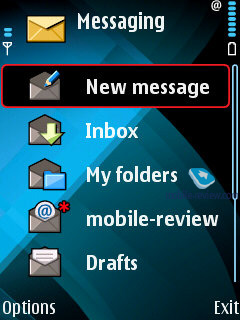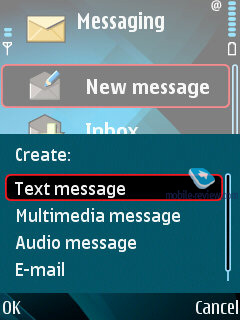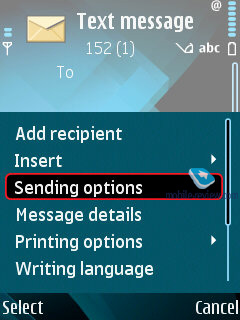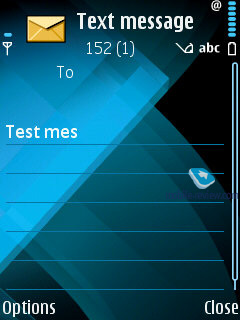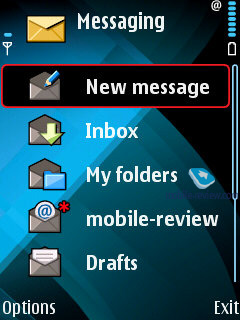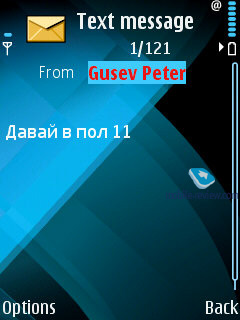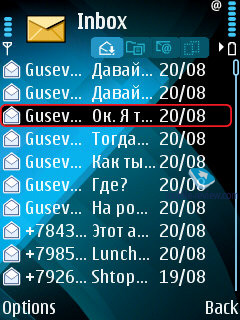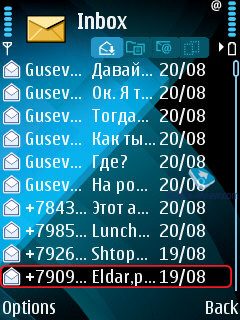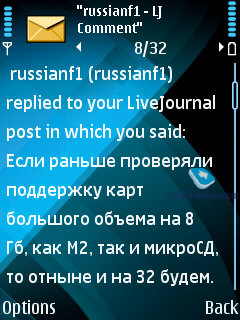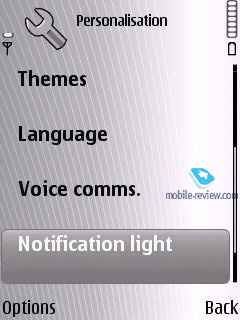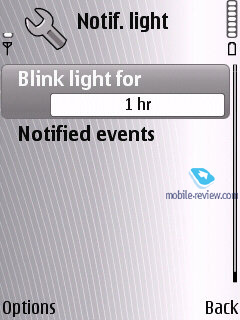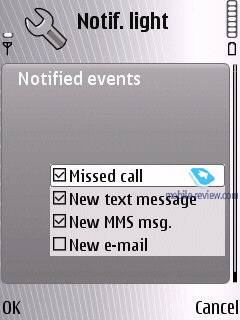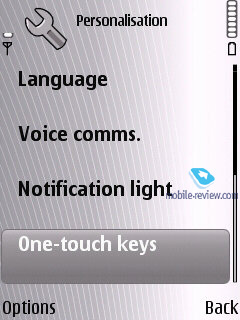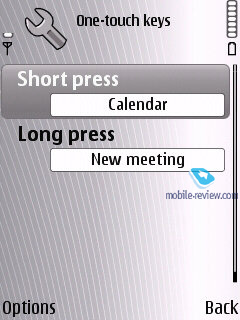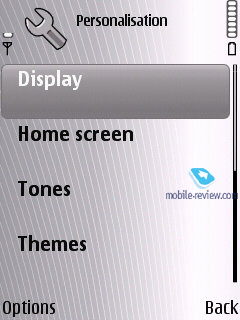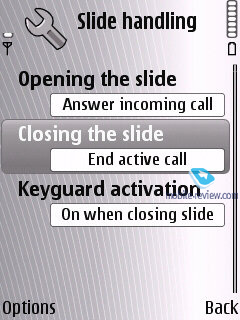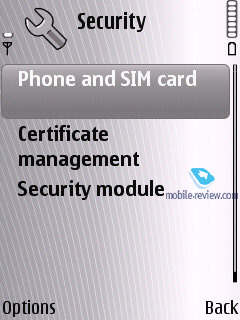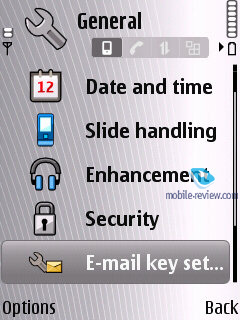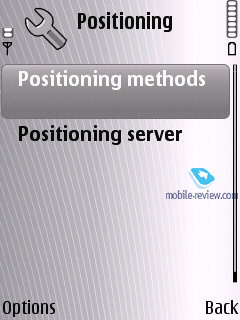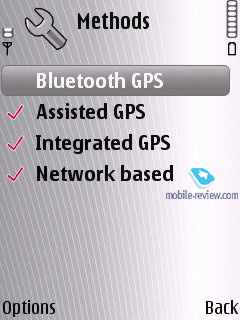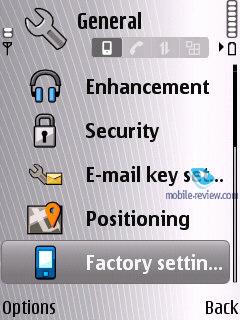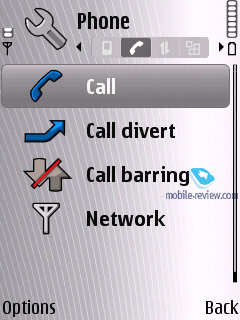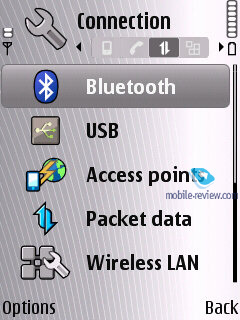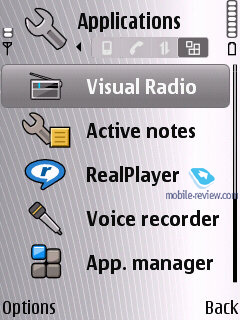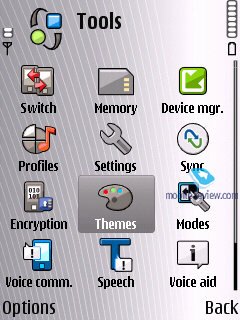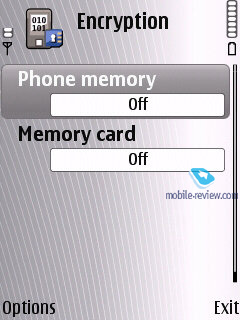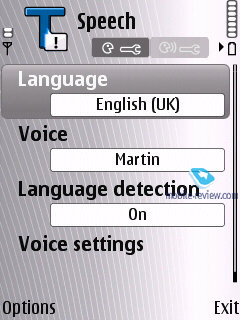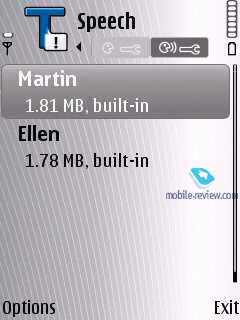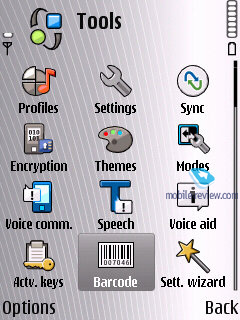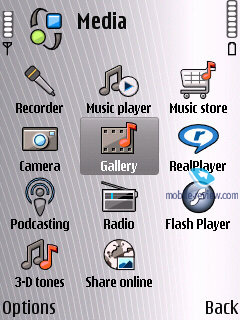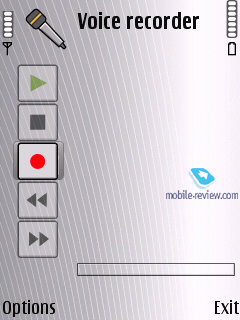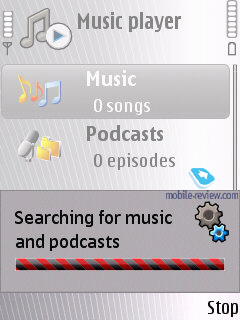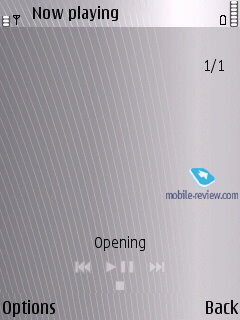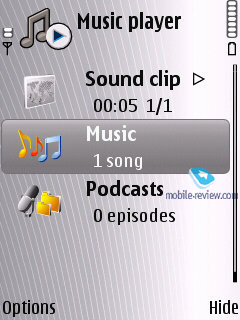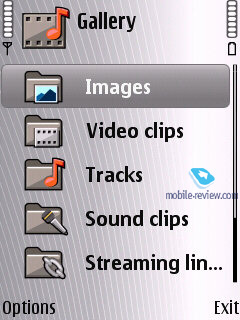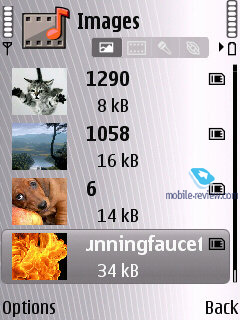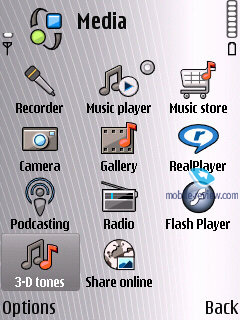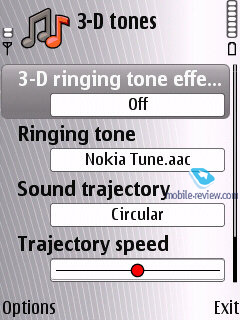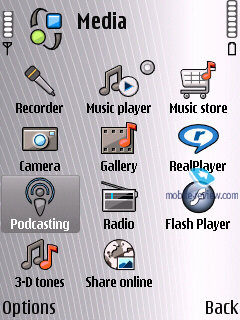|
|
Review of GSM/UMTS-handset Nokia E66
Live images of the Nokia E66
Table of Contents:
- Positioning
- Design, Size, Controls
- Display
- Keypad
- Battery
- Memory
- Performance
- USB, Bluetooth, Wi-Fi
- Camera
- Software Department
- GPS-navigation
- Music Department
- Impressions
Sales package:
- Handset
- Battery (BL-4U)
- Charger (AC-5)
- USB data cable (CA-101)
- Wired stereo-headset (HS-47)
- Wrist strap
- Carrying case
- User Guide, Software CD
- 2Gb microSD memory card (size may vary by market)
Positioning
The Nokia E66 comes into the market to take the place of the Nokia E65 - first phone to break away from the Eseries boring and no-nonsense design. In fact, it was the only way to broaden its target audience without hammering the E65's business-savvy features. The Nokia E66 is a different creature - they have decided to ditch flamboyant and bring colors, replacing them with a robust metallic casing, which the NSeries solutions don't have. All in all, it's a sound way to separate these two product categories both in terms of materials and positioning. This way, the ESeries appears to combine design, sturdiness and a well-rounded feature pack, which doesn't make it a multimedia monster, however. Its looks is fairly conservative, but not overly so, and its functionality has been tweaked pretty much along the same lines. That said, the Nokia E66 is a nice attempt to cater for the tastes of most users out there.

But there is another thing that makes the Nokia E66 an interesting choice - when you look at the market, you won't find an array of sliders housed in metallic casings. Personally, the only offerings I can think of are the Samsung U900 Soul, Samsung L870 (an S60 smartphone, whose review will come up later this week) and probably Motorola Z6, although it's about to get withdrawn from the market. Curiously, though, while many major phone makers overlook this segment, these products have been sought-after over the last couple of years.
Furthermore, many consumers tend to put the Nokia E66's apparel above all other departments - they simply couldn't care less what's inside. Can it make calls?! Good. Does it have a passable camera? Check. Any chance Bluetooth is onboard? Check. And so on. In other words, the E66's design and materials it's made of become all another point on consumers' wish list when they are choosing a new phone. What's more, it's towards the top of their lists, pushing WiFi, GPS and S60 functionality to the bottom.
Unlike the Nokia E71, from which the E66 borrows all of its features, this phone is positioned for a much wider audience. You could divide all its users into two huge groups - unsophisticated consumers who'd never tell the difference between smartphones and feature phones and whose needs are confined to a very narrow array of features (such as music, radio, camera, rarely internet and some online services). The other group includes people who are in the market for a reasonable price/quality ratio and a robust feature pack. Although this statement may sound somewhat bizarre, as robust feature packs usually come with top-of-the-line phones with heftier price tag, but these two terms get together very well when you account only for essential feats and applications (for instance, many aren't really bent on cameras in their mobile phones and therefore it can't be deemed a vital addition to the phone's pool of features).
Nokia E66 vs Nokia E71:
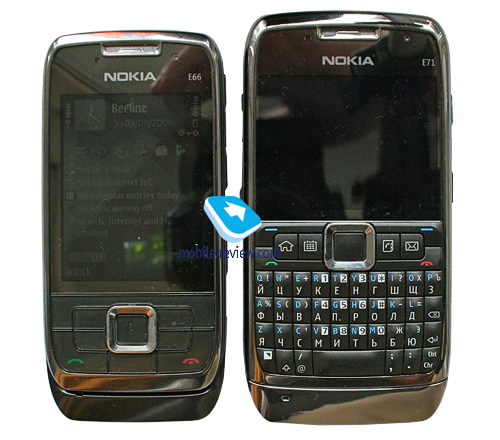
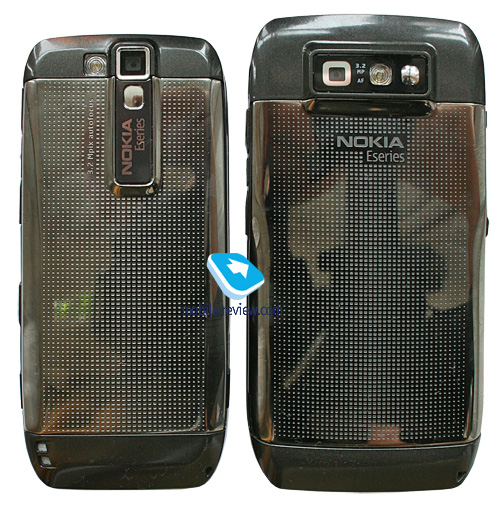
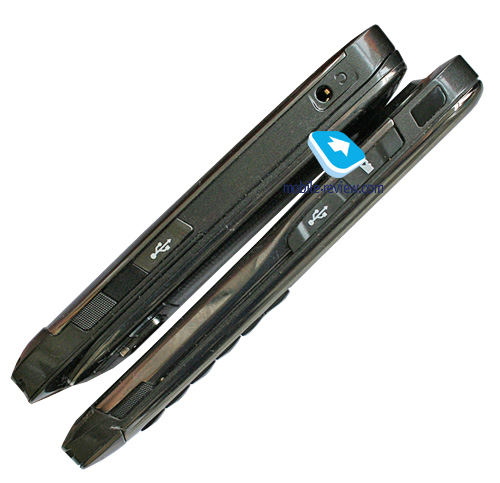
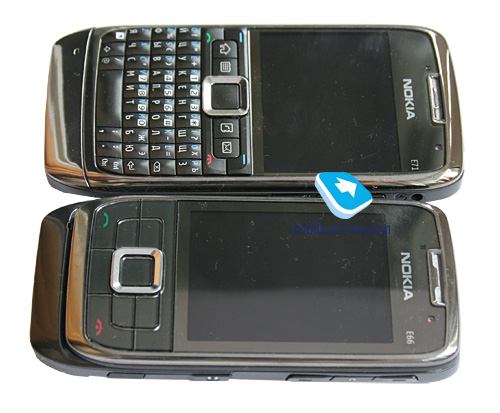
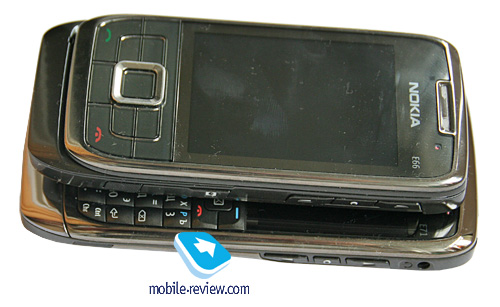
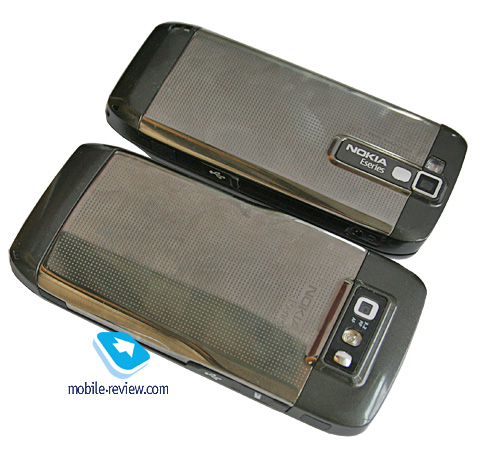
Interestingly, the E66 won't face any direct competition. You could argue that the Samsung L870 can qualify as one hands-down, but in all honestly the only factor that makes them look similar is both phones sport a lot of metallic accents in their designs. But since the L870 is almost a hundred Euros cheaper it ends up in a completely different league. Another possible alternative is Samsung's flagship solution - the U900 Soul. But while it beats the E66 in terms of camera quality, it will only suit people who need a fashionable buzzer rather than a converged device.
Nokia E66 vs Samsung L870:
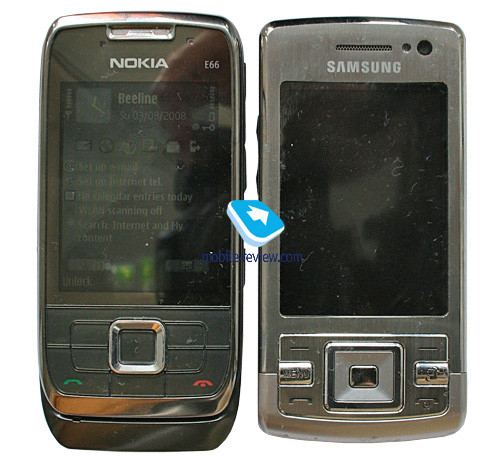

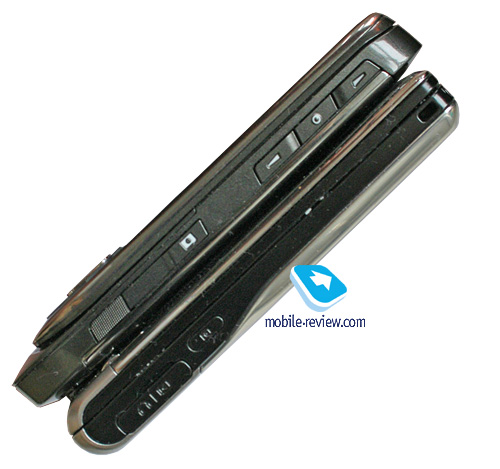
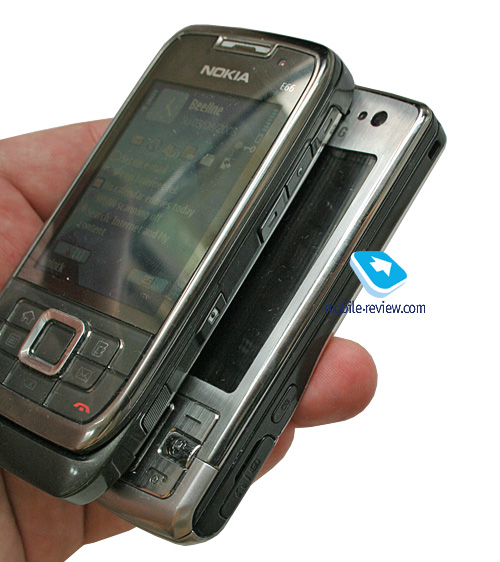
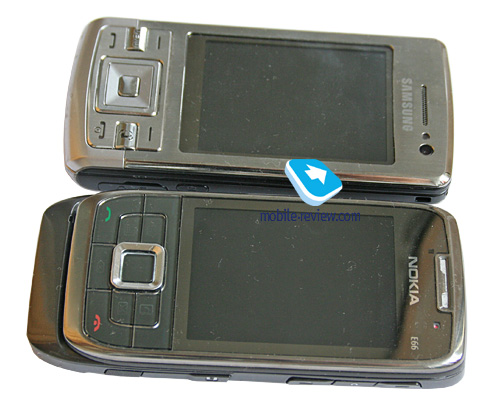

As far as price/functionality ratio is concerned, the E66 is rivaled by the Sony Ericsson G705, whose release is scheduled for late 2008, but remarkably, it will retail for the same money (350 Euro on all major European markets). The G705 will run A200 platform, sport a 3.2 Mpix camera, WiFi connectivity, GPS navigation, nice and bright QVGA display and a laundry list of other features and abilities. While it won't have any metallic accents in its design, the G705 will boast several aluminum inserts (polished and painted in order to resemble metallic parts). Plus it will come with the same screen rotation feature as the E66. All in all, these two have got a lot in common, even though they are styled in completely different ways. The Nokia E66, however, appears to be the winner in the sense of functionality; on the other hand, the blockier Sony Ericsson G705 will probably look more appealing. But at the end of the day, the G705's audience will include only people who are after a feature phone and aren't too heavy on extra feats and abilities.
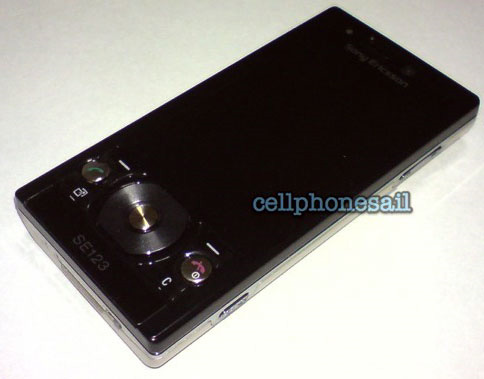
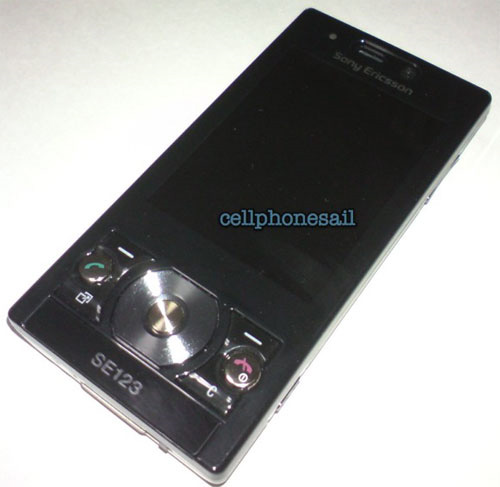
All in all, the E66's unique positioning introduces it into the mass market, just like the E65 some time ago, but at the same time it sets it apart from the competition. And the truth is, it will be second to none for a while long, since no other phone will be able to take it on in the foreseeable future. The Nokia E66 will be a great way to upgrade your old E65, provided that you need its functionality and have nothing against its design. Basically, the latter point has always been the arch problem of fashion-savvy solutions - it's never for sure that an upgrade will be as craved as the original device.
Back to the table of contents >>>
Design, Size, Controls
The E66 measures up at 107.5x49.5x13.6 mm and tips our scales at 121 grams. There are two color options available - black or white, although in either edition you'll get a light-colored battery compartment cover, but with different patterns. Both trims look gorgeous - the black one will suit men, whereas the white color is more tailored for women (although it looked no less appealing to men).
Video, design and size (wmv, 25 mb) >>>
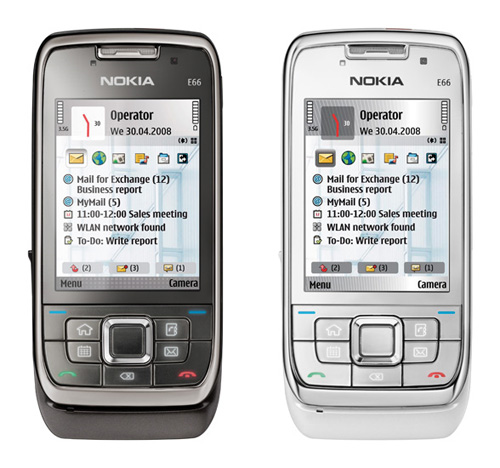
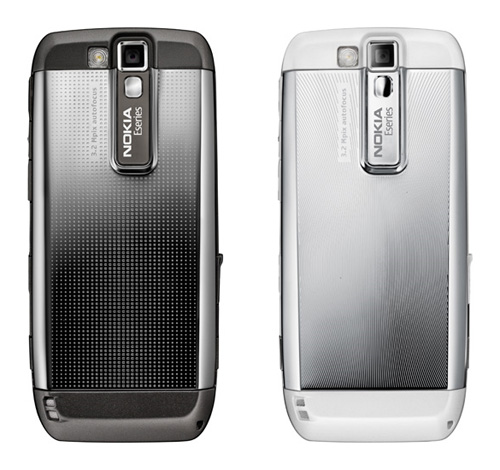
The display is rimmed by a white metal-esque plastic strip (in our phone it was dark gray). While it's quite fingerprint-prone, it does a good job making them indiscernible.

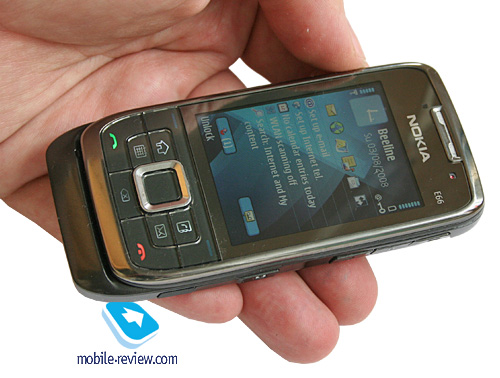
Housed on the left-hand side of the E66 is the 2.5 mm audio jack along with IrDA port and microUSB socket, covered by a plastic flap. Flipping over to the right, you will find the volume controls, dedicated Voice button (calls up the voice dial or voice recorder while in a call) and camera trigger.

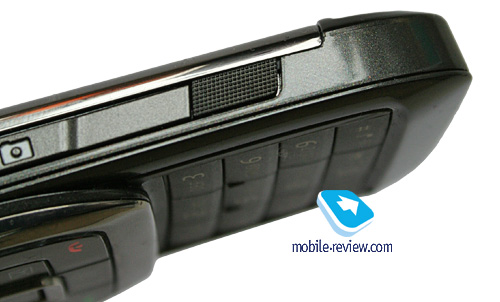
The power key is mounted on the top end, while the 2 mm charger slot is found at the base of the E66. Sitting right above the display is the forward-facing camera for videoconferencing and ambient light sensor (handles the backlight intensity of both the screen and keypad).
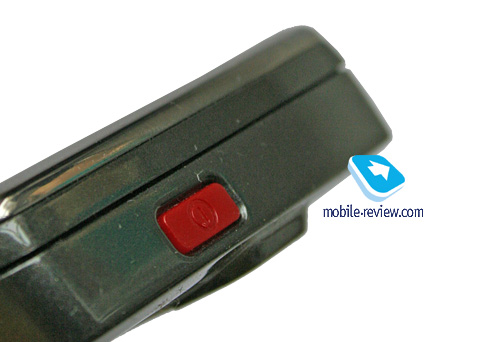
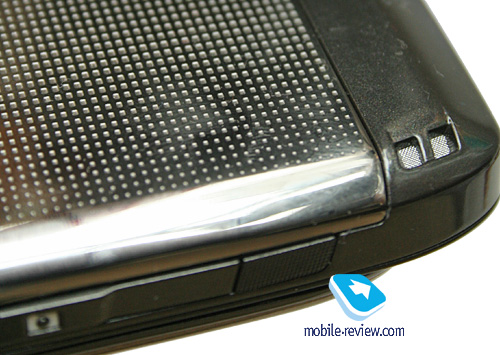
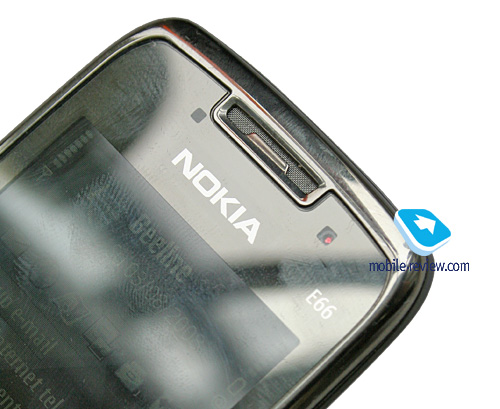
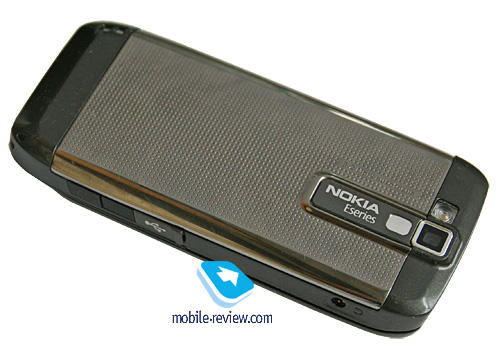
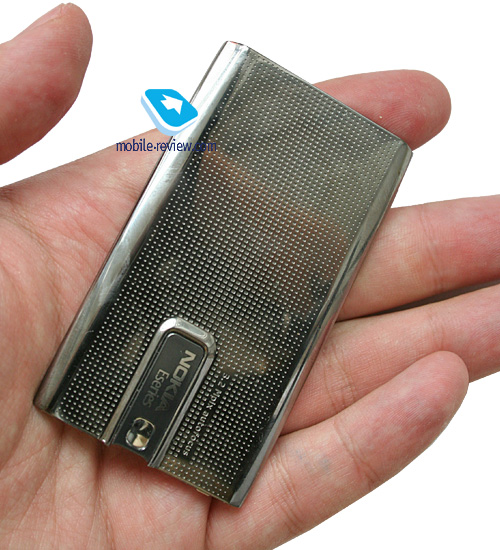
The Nokia E66 feels like a very well-build phone, plus its materials seem pretty sturdy and durable. Perhaps the only chink in its armour is the navigation pad, where some pieces of coating around the edges peeled off after a month of use or so. It's quite another matter, though, that these problem areas don't grow bigger with time and generally keep a low profile.

The E66 also features a service LED built right into the navigation key, much like in other Nokia-branded handsets.
Zipping the phone open is very easy, even when doing this single-handedly all thanks to a fine-tuned spring loaded mechanism that makes the slider action feather-light.
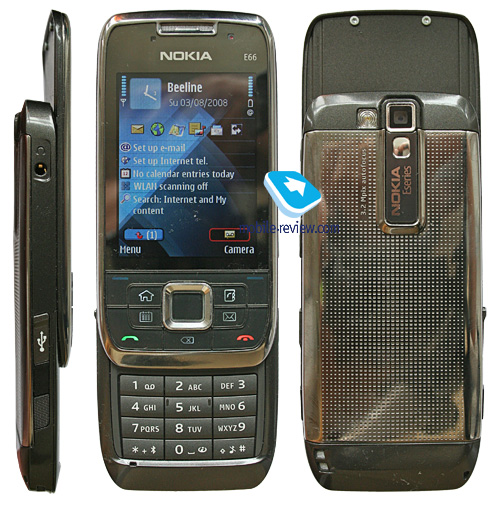
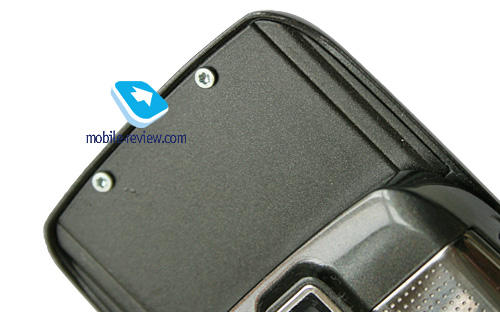
Back to the table of contents >>>
Display
The E66 utilizes a 2.36-inch QVGA display (320x240 pixels, 48x36mm), capable of up to 16 million colors. It manages to output a pretty decent picture quality-wise that remains readable in various environments (it doesn't fade away in the sun at that, all thanks to the mirror underlayer).
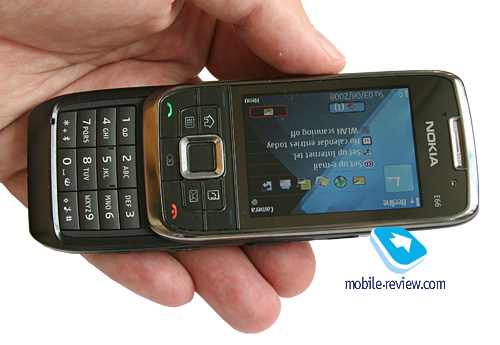
On balance, the E66 packs in a likable display and we are pretty much content with it. It can accommodate up to 8 text and 3 service lines (with some modes allowing for up to 14 text lines).
You can also opt to disable automatic screen rotation on the Nokia E66.
Back to the table of contents >>>
Keypad
The E66's numberpad is nothing to write home about - it consists of plastic domed keys that are a cinch to handle. All buttons are lit in white, plus the backlight intensity is managed by the inbuilt ambient light sensor, which keeps them readable both in and outdoors.
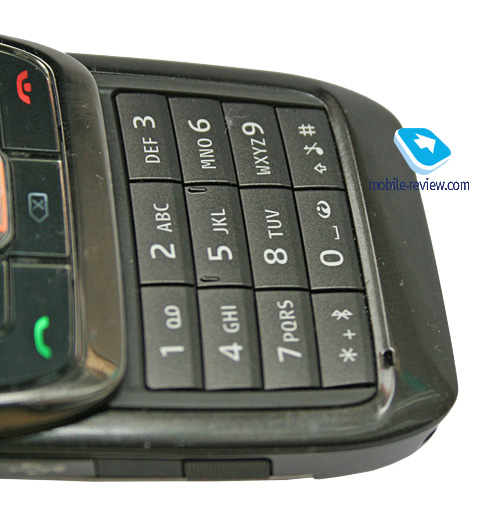
Now for the functional buttons. The E66's trademark feature is a 4-button setup (including the Menu button) that allows for one-click access to the calendar, phonebook and mail applications. On top of that there are actually two ways to press each of these keys - long-press and a short click. This way, with a short press you will jump into the phonebook's general list of entries, the mailbox or monthly view of calendar. However when you tap and hold these keys, you will be able to create a new contact, entry in calendar or email. Punching these keys one more time will get you back to the main menu.
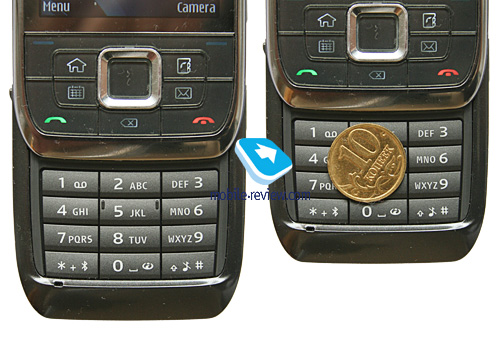
Furthermore, you can even reprogram these buttons to access custom applications or features.
The E66's navigation button is pretty comfortable to use; also it has a service LED built inside. The good thing about it is that it is fully customizable - you can setup event notifications and other options. Unfortunately there is no way to disable it during night time (since it glows a little too bright in the dark).
Back to the table of contents >>>
Battery
The handset utilizes a 1000 mAh Li-Pol battery (BL-4U), as opposed to the Nokia E71's 1500 mAh cell. The E66 is rated for 7.5 hours of talk time (GSM) and 264 hours of standby. Music time - up to 14 hours.
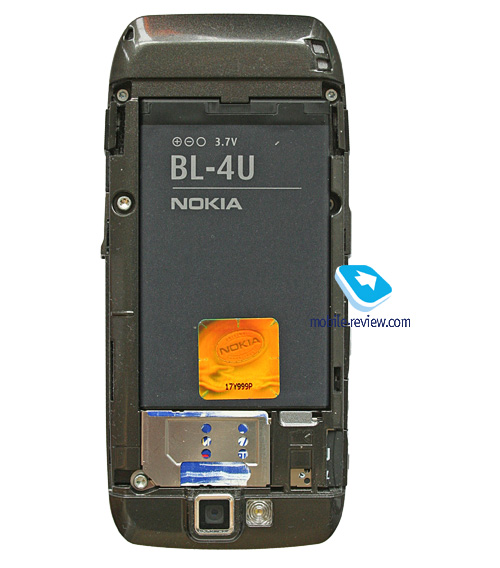
The handset's battery life averaged 2-2,5 days in our tests (in Europe, however, you will squeeze around 3-3,5 days out of it), when we used the E66 for about two hours of calls, a dozen or two snaps, several minutes of video, and around an hour of music/radio. It takes the E66 around 1.5 hours to charge from empty to full.
Below is our chart of battery times we managed to squeeze out of the E66:
- GPS-navigation - 4 hours15 minutes
- Video playback - 4 hours
- WEB-surfing (EDGE) - 3.5 hours
- Wi-Fi (non-stop data upload) - 4 hours for non-stop data transfer, 120 hours of standby (according to Nokia)
Back to the table of contents >>>
Memory
The device comes equipped with 128 Mb of RAM, after first launch you will get around 70 Mb of free memory at your disposal, which is enough for running a dozen applications and browsing "heavy" web-pages - the word "slow-down" is definitely not in the E66's vocabulary.
The user almost has 110 Mb of storage available, where any data can be stored.
The E66 deals with microSD memory cards (hot-swappable), the phone comes packaged with a 2Gb unit. There are no restrictions as far as memory card's size is concerned - our handset easily identified a 32Gb card.
Back to the table of contents >>>
Performance
Thanks to its, beefed up memory and a faster CPU (ARM11 running at 369 Mhz, against the E61i's ARM9 and its 220 Mhz), the E66's performance has almost doubled compared to the E61i. You can literally soar through all applications and menusm also the handset can have more applications running in the background at a time.
Back to the table of contents >>>
USB, Bluetooth
USB. Using the USB settings you can choose one of the following modes:
- Data Transfer (Mass Storage USB) Ц memory cards is available, no drivers required, as your OS identifies the handset automatically.
- PC Suite Ц used for device management via Nokia PC Suite, enables all features of the phone, data backup etc.
- Image Print Ц no explanation required.
The E66's data transfer speeds top out at 2 Mb/s.
Bluetooth. The phone comes with Bluetooth v2.0, with support for EDR. The following profiles are supported:
- A2DP
- AVCRP
- BIP-ImagePush
- DUN-GW
- FT-Server
- HandsFree-AG (1.0)
- Headset-AG
- OBEX
- OPP-Client
- OPP-Server
- SIM Access-Server
The top speed you can get with the E66's Bluetooth connection is around 100 Kb/s. We also tested its A2DP profile in pair with the Sony Ericsson DS970 headset, which worked just fine - we managed our play list, skipped within tracks and adjusted volume seamlessly, however we couldn't make current track's title show up on the E66's display.
Wi-Fi. This handset comes armed with Wi-Fi (IEEE 802.11 g) support. All security standards are supported, including WEP , WPA , WPA 2, with other advanced settings available. Unlike the NSeries, the E66 doesn't support Universal PnP (UPnP). Although, it boasts the WiFi Wizard, which can search and tap into available networks in background mode.
The IrDA's data transfer speed tops out at 115 Kb/s.
Back to the table of contents >>>
Camera
The E66 utilizes a 3.2 Mpix CMOS camera with auto-focus. I shall say that the quality you get with the E66 is what you'd expect from this type of camera- it is fairly decent for a business-minded phone, but can't stand comparison to today's imaging-savvy solutions.

You can go for one of the following resolutions:
- Print 3M Ц Large
- Print 2M Ц Large
- Print/e-mail 1M Ц Small
- Multimedia message 0.3M
The maker doesn't provide the real image resolutions, so we take this duty in our own hands. The following resolutions are utilized in the abovementioned modes: 2048x1536, 1600x1200, 1024x768, 640x480 pixels. The picture size averages 1 Mb, 600-700 Kb, 250-300 Kb and 75-100 Kb respectively. You can't adjust the picture quality settings with the E66.
The handset utilizes the digital zoom feature topping out at x20, moreover, there are "normal" and "enhanced" zoom - the latter allows reaching the maximum magnification, yet some artifacts slip into your pictures. When using the standard digital zoom, though, these artifacts are not all that discernible. And since you can perform just the same zoom-in in any graphics editor, using it while shooting is probably not the best idea.
The shooting modes comprise a user-defined mode, auto and macro. Other options include portrait, landscape, night, night portrait, sport.
The flash can be set to trigger automatically, turned off, or work in the red-eye reduction mode. The self-timer can be programmed to go off in 2, 10 and 20 seconds. The handset can take snaps in rapid successions (three at a time), which may come in handy should you work with fast moving objects. The function is intended to be Sony Ericsson's Best Pic counterpart, yet as it stands now, it offers less flexibility.
Exposure compensation - this feature is interesting in some specific environments, when it will provide for better and sharper shots. It can be modified on a -2 - +2 scale with a 0.3 step.
White balance - Auto, Sunny, Cloudy, Incandescent, Fluorescent. Overlays available are Sepia, Black&White, Negative
The ISO settings are set to Auto by default, while other options may be selected manually; much like some cameras, here the maker allows choosing ranges, rather than specific ISO values. In other words, when you choose the Low ISO setup, it includes a range of settings from 60 to 200 etc. This is all another step towards the mass market, an attempt to isolate the user from all technical nuances.
 |
 |
| (+) enlarge, 2048x1536, JPEG |
(+) enlarge, 2048x1536, JPEG |
 |
 |
| (+) enlarge, 2048x1536, JPEG |
(+) enlarge, 2048x1536, JPEG |
 |
 |
| (+) enlarge, 2048x1536, JPEG |
(+) enlarge, 2048x1536, JPEG |
 |
 |
| (+) enlarge, 2048x1536, JPEG |
(+) enlarge, 2048x1536, JPEG |
 |
 |
| (+) enlarge, 2048x1536, JPEG |
(+) enlarge, 2048x1536, JPEG |
Video recording. ѕWhen recording video with E66, there are considerably fewer settings, than in the still image mode. There is a software image stabilizer that was first introduced in the Nokia N80. You can adjust the white balance, choosing from Automatic, Sun, Cloudy, Incandescent, Fluorescent. The overlay pool includes Sepia, Black&White, Negative. There are only two shooting modes - auto or night mode. Maximum resolution - 320x240 pixels (mpeg4), you can also mute sound, although there is no way you can adjust the E66's FPS, which is locked at 15. The handset allows recording videos until you run out of free memory.
Back to the table of contents >>>
Software Department
The ESeries devices have always been worlds apart from other S60-powered devices in the way of software. Some apps and options that were tested on these phones in the first place are now becoming par for the course in the rest of the company's portfolio, but some still remain the trademark features of the ESeries. This way, the Nokia E66, much like the E71, sports a unique phonebook, calendar and some other features that are very different from those generic applications built into S60 3rd edition FP1. Let's see what new feats and abilities the E66 brings to the table.
The desktop mode has been revamped a little - now at the bottom there are three icons standing for missed calls, messages and voice mail. If there are no events at hand, the corresponding icon will vanish. Clicking on each thumbnail will make a pop-up with extra information appear on the screen.
Video, E66's menu tree (wmv, 17,5 mb) >>>
Mode. The E66 is the first Eseries-branded device ever to boast the Mode functionality. In a nutshell, it's a mobile version of the latest PC craze - virtual desktops. That is, you make up a couple of screens, where various themes, pictures, applications, plug-ins and other essentials are housed/used. And then you can swap between them in one touch, so that it's always easy to jump between your setup for work with mail and notifications brought up on the main screen and the home setup with a different theme applied (without your company's logo or colors) and player controls lined up on the screen instead of email notifications. It takes the E66 around 6-7 seconds to jump between modes.
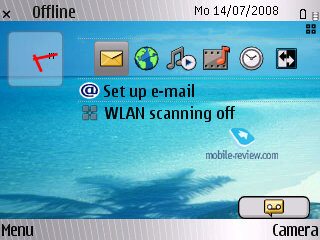
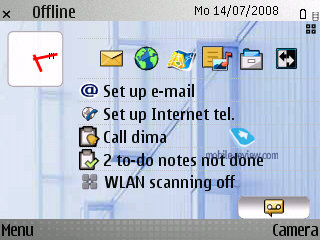
Phonebook. While at the standby screen you can type in any letter from the thumbboard and the phone will instantly look-up all contacts in the phonebook that have with this letter in either first or last names. Unfortunately, this kind of search works only for contacts in English (even in localized phones).
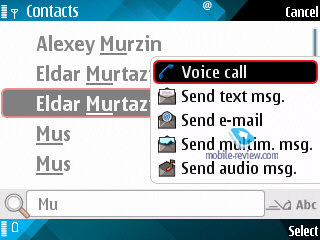
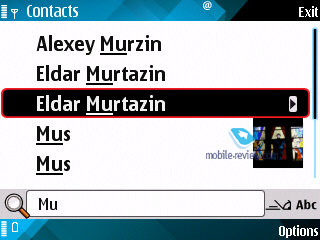
Contact groups have been given a major boost too - now you can submit a number for voice conferences, a password and also a PIN-code. Enterprise users, who use conference calls a lot, will surely appreciate this new ability. Plus you can select a ring tone for any contact group in the E66 (but not a picture, regrettably).
With groups you can also make use of "Call to many" feature, which will allow the E66 to set up a conference call on its own; on top of that the handset allows for bulk mailing.
Regrettably, there are no other views available for the phonebook - for instance, you can't make the E66 show contacts coupled with at least one phone number. At the same time it allows calling up a drop-out menu by selecting a contact and pressing the navigation button right - it'll let you make a call or send a message without leaving the phonebook menu. On top of that this list is context-sensitive, meaning that its options will change depending on what types of phone numbers are available for the contact in question.
The roster of fields you get to fill when creating or editing a contact hasn't changed much, but the E66 manages to offer a better address field setup and also BlackBerry PIN as a default option.
Calendar. The Calendar application hasn't changed a bit since its last iteration; in fact the only thing that's different is its layout, when the E66 shows both the calendar and events scheduled for the current day. In case there are too many entries, the E66 will show only their total number with no extra information. When using the weekly view of calendar, all events are displayed just like in MS Outlook, plus there are some pop-up tips scattered across the screen. All in all, while pleasant, none of these changes are groundbreaking.
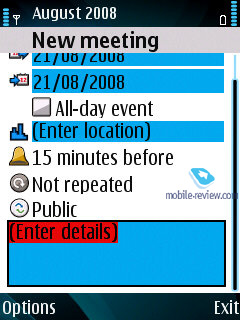
Voice Aid. While this feature's name probably doesn't say much, I find it pretty interesting and useful. For instance, it will allow you to handle the E66 when driving and so that you have only one free hand - simply assign this feat to one of the shortcut buttons, and there you go, you can either make the handset read out the call log, or pick an entry in the phonebook without even looking at it. In the latter case all entries get grouped up by the first letter of their names - by pressing the navi-key left or right you will switch between these categories (ABC, DEF, etc) and punching it up and down will scroll through the list, while the phone will be reading out all contacts you hover upon.
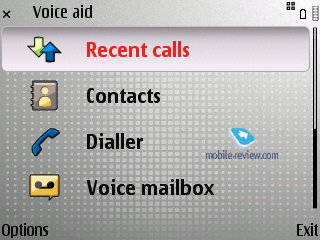
Message Reader is available with other S60 devices too - this application does pretty much what its name says, it reads messages aloud.
Clocl Ц using this feature you will make the E66 tell you what time it is now.
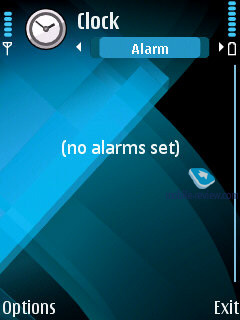
Dialer Ц this application has been carried over from previous ESeries devices and basically it stems from handsfree car-kits - it allows you to scroll through a list with digits while the handset is reading them out aloud, so that you can dial a number without looking at the display at all.
Voice dial. There has been a lot of fuss around the E66's official description on Nokia's site, specifically around this line - Speaker dependent and speaker independent voice dialing (SDND, SIND). Someone suggested that the handset featured recordable voice tags, just like on old phones. But I have to disappoint him and everyone who believed in this - the E61 runs with the system that can adjust to your voice and keeps improving on the go. Although some think this intelligent system doesn't really work (and the truth is, it almost never finds the right name at first), in fact it takes the E66 around a week to come to grips with your voice and pronunciation and reduce the number of errors.
Data encyption. Another change of note - the E66's ability to encrypt data both on the memory card (microSD of any size) and the handset's internal memory. And this saves you a whole lot of trouble should you smartphone end up in some villain's hands, who does know how to break a standard password. On the other hand, if you forget the password yourself, you won't be able to recover the data, which will be a pity, but all systems of this kind have this glitch.
Office Tool. Enterprise users will surely appreciate the E66's Intranet application, which comprises the settings of VPN-client.
As far as office tools go, the E66 is no revolution - it has had its mail client improved, the phonebook has been tweaked here and there too, along with some other applications. Microsoft Office documents are still handled by QuickOffice, which is a pity (although many will be content with what it has to offer). Also there is a ZIP archiver and PDF reading tool. The Search 4.0 app can be linked directly on the main screen.
Themes Ц the E66 comes equipped with four themes. None of them is particularly flashy, which is good, but our only complain is about the way all icons and thumbnails look - they are quite bizarre, you'd be much better off replacing them with a custom pack.
Bar code scanner Ц шmaybe it'll come in handy some day.
Screenshots:
Back to the table of contents >>>
GPS-navigation
The major update to this department is the new version of Nokia Maps, which you can learn more about in our review of the FP2. Also, we would like to note that the application has become even speedier, the cold start time makes around 4-5 minutes, and we felt that the gears were spinning faster, so to speak. To my mind, the E66 is a tidy navigation-savvy solution, it does the job hands down. But, unfortunately, as far as battery life goes, the E66 doesn't improve over the predecessors.
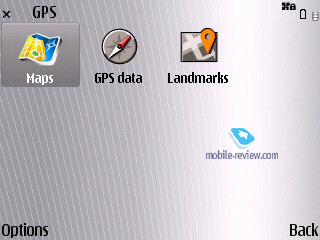
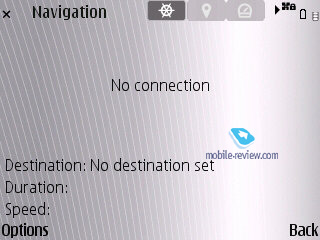
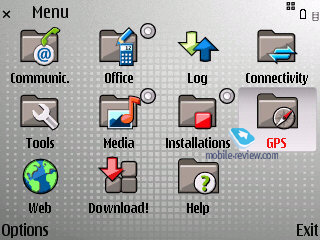
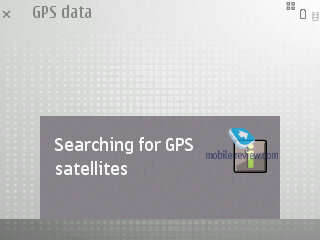
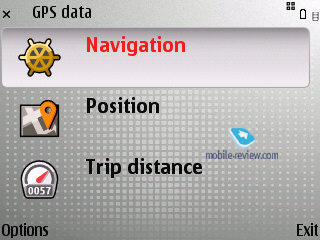
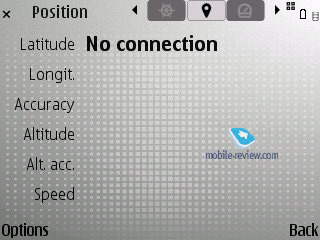
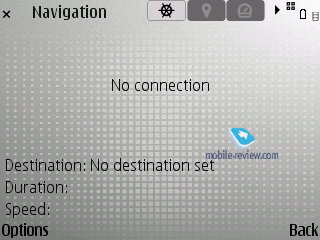
Back to the table of contents >>>
Music Department
A lot of people keep asking me to write about the E66's music department, which is, in fact, little to no different from what you can experience with other S60-powred devices. I really don't know what else to add - the sound quality hasn't improved much, the player interface is still the same. I imagine many S60 die-hard fans would like to hear something along these lines: "Wow, it's the most advanced player in a non-music savvy phone ever, it's audio quality is mind-blowing, and it can make coffee!" Not going to happen - for starters, because the E66's 2.5 mm headset jack is not the best way to go when it comes to music. And if you are eager to learn more about the player's default functionality - read our comprehensive review of this platform.
Back to the table of contents >>>
Impressions
Call quality was never an issue with the E66, as it easily lived up to our expectations of a Nokia-branded phone. Ring tones sounded quite loud and we were happy with them even in noisy environments. The vibro alter was of moderate strength.
Some consumers may actually face the dilemma which phone to go for - the Nokia E66 or E71. And this is especially true in view of their identically hefty price tags and same functionality. In my opinion if you aren't sweet on emails and messaging and generally don't need a full-featured thumbboard, then the E66 is the way to go - its rotating screen will give you the same level of comfort when viewing photos and videos anyway.
Since it doesn't have any direct competitors, the E66 is in a pretty decent position, plus given its great price/quality ratio at 350 Euro per unit the Nokia E66 will suit both unsophisticated consumers and hardcore users that always want to have all imaginable features in their phones and then some more. Furthermore, these days Nokia offers a slew of phones of this caliber - very affordable, and at the same time well-rounded in terms of functionality.
The SAR value for the E66 is 1.37 W/kg.
Related links:
Back to the table of contents >>>
Eldar Murtazin ([email protected])
Translated by Oleg Kononosov ([email protected])
Published — 17 September 2008
Have something to add?! Write us... [email protected]
|
News:
[ 31-07 16:21 ]Sir Jony Ive: Apple Isn't In It For The Money
[ 31-07 13:34 ]Video: Nokia Designer Interviews
[ 31-07 13:10 ]RIM To Layoff 3,000 More Employees
[ 30-07 20:59 ]Video: iPhone 5 Housing Shown Off
[ 30-07 19:12 ]Android Fortunes Decline In U.S.
[ 25-07 16:18 ]Why Apple Is Suing Samsung?
[ 25-07 15:53 ]A Few Choice Quotes About Apple ... By Samsung
[ 23-07 20:25 ]Russian iOS Hacker Calls It A Day
[ 23-07 17:40 ]Video: It's Still Not Out, But Galaxy Note 10.1 Gets An Ad
[ 19-07 19:10 ]Another Loss For Nokia: $1 Billion Down In Q2
[ 19-07 17:22 ]British Judge Orders Apple To Run Ads Saying Samsung Did Not Copy Them
[ 19-07 16:57 ]iPhone 5 To Feature Nano-SIM Cards
[ 18-07 14:20 ]What The iPad Could Have Looked Like ...
[ 18-07 13:25 ]App Store Hack Is Still Going Strong Despite Apple's Best Efforts
[ 13-07 12:34 ]Infographic: The (Hypothetical) Sale Of RIM
[ 13-07 11:10 ]Video: iPhone Hacker Makes In-App Purchases Free
[ 12-07 19:50 ]iPhone 5 Images Leak Again
[ 12-07 17:51 ]Android Takes 50%+ Of U.S. And Europe
[ 11-07 16:02 ]Apple Involved In 60% Of Patent Suits
[ 11-07 13:14 ]Video: Kindle Fire Gets A Jelly Bean
Subscribe
|
